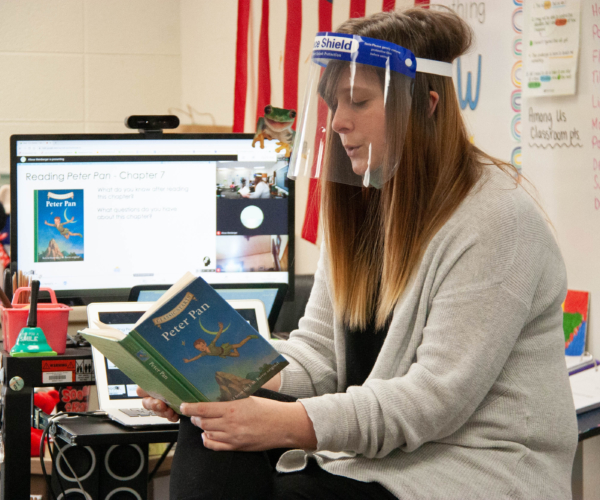Keeping classrooms open during a worsening COVID pandemic and designing a hybrid learning model presented Loren Glasbrenner with a pair of unprecedented challenges during his first year as a superintendent.
Glasbrenner took the helm at southern Wisconsin’s rural River Valley School District at the beginning of the 2020-21 school year after working as an administrator in a suburban district near Madison.
COVID has levelled the playing field for administrator because no one has experience leading a district through a pandemic, Glasbrenner says.
“Administrators and superintendents have become incredibly collaborative and vulnerable enough to say ‘I don’t know,'” he says. “Being new, I didn’t feel new because everything was new to everyone.
More from DA: 16 steps to stronger teacher support and system-level change
Glasbrenner meets regularly with other superintendents in his region to discuss mission-critical topics such as continuing academic growth, offering vaccinations and operating on snow days.
Glasbrenner says he hopes heightened attention to issues of educational equity will be another lasting effect of the COVID experience.
“When students can’t come to school, the economic disparities become so much louder,” he says. “I think districts are going to be clamoring for equity and fair funding.”
For some families, access is a matter of cost. For others, it’s geography—broadband and cell signals don’t penetrate into some of the regions’ deep valleys.
That limits the effectiveness of devices and mobile Wi-Fi hotspots provided by the district. Administrators have therefore set up community hotspots at libraries and even a fire station so students can connect to the internet to do remote work.
The next big challenge may be an offshoot the teacher shortage that has impacted many U.S. district but which has been felt most keenly in rural areas.
More from DA: How a rural superintendent balances COVID concerns
“Summer school, which many states are looking at to recover learning loss, will be difficult to staff,” Glasbrenner says. “I find a lot of teacher are hoping for some time to be with their families again offline, rather than online.”
He will work to increase summer schools salaries, says Glasbrenner, adding high praise for his teachers’ handling of the quick shift to hybrid learning.
“Our teachers learned how to be a very different kinds of teachers in 72 hours,” he says. “One of the things we’ll take away is that we can learn at the drop of a hat.”









